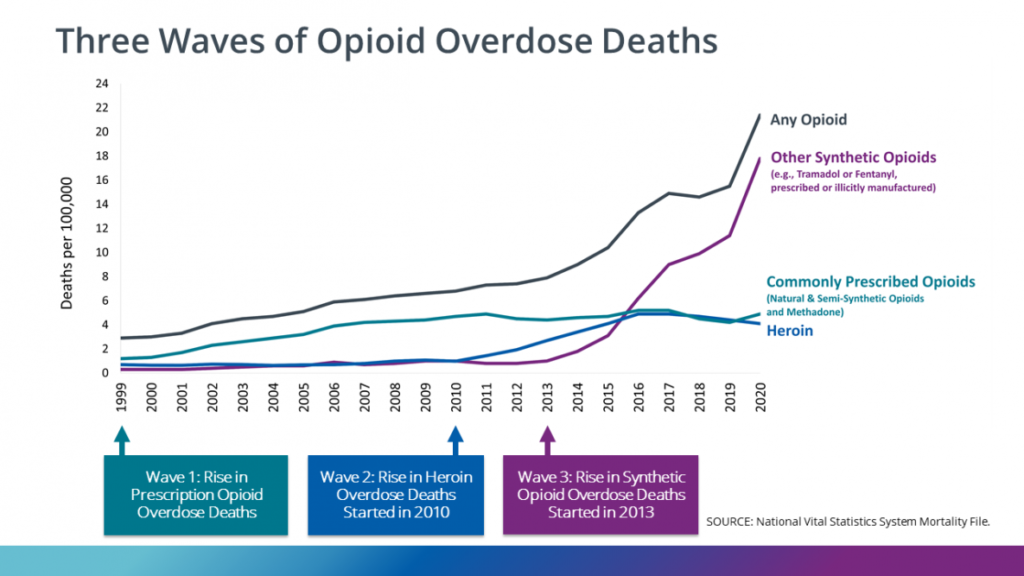The Opioid Crisis

Since the 1990s, the US has seen significant increases in the rates of opioid abuse and opioid-related deaths. In fact, the issue has become so severe and so prominent in the country that many health organizations have categorized this crisis as a national emergency and an “Opioid Epidemic.”
During the 1990s, pharmaceutical companies began increasing their production of prescription “pain-killing” medications. In order to sell the amount they were producing, these companies encouraged doctors and other medical professionals to increase the prescription of these medications by claiming they were not addictive or harmful to patients. Soon, painkillers were the most common way to treat pain as compared to treatments like physical therapy.
As the US population began relying more heavily on prescription opioids to treat their pain, they began experiencing some of the common side effects (addiction) of these medications that pharmaceutical companies chose not to reveal to medical practitioners. This in turn led to extremely high rates of overdose and death in the US. However, the impact of over-prescription did not end there. Another side effect that results from misuse or high intake of prescription drugs is a buildup of tolerance, a condition in which these medications no longer produce the same “high” as they did before. This, in many cases, encouraged individuals to resort to other opioids like heroin and fentanyl that would produce the desired effect, and this too led to high numbers of overdose and death. The shift towards these semi-synthetic and synthetic drugs is considered to constitute the second and third “waves” of the Opioid Crisis, and it continued to increase the rate of drug abuse and addiction in the US.
Sadly, this issue is still prevalent today…and worsening. Since 1999 more than 600,000 people in the USA and Canada have died from opioid overdoses and a staggering 1.2 million more are estimated to die due to overdose by 2029. 2020 marked the deadliest year yet in the North American opioid epidemic: more than 100 000 drug overdoses were recorded in the USA (over 1,200 in Wisconsin), with nearly 76 000 of them attributed to opioids, an increase of approximately 30% over 2019. The exceptional circumstances of the COVID-19 pandemic may have contributed to many overdose deaths by disrupting treatment programs and access to life-saving medications such as naloxone, and by limiting support networks. Yet the opioid epidemic has been a constant, complex, and decades-long crisis since its inception in 1995 when OxyContin was approved and erroneously marketed as a safe and low-risk extended-release opioid analgesic.

